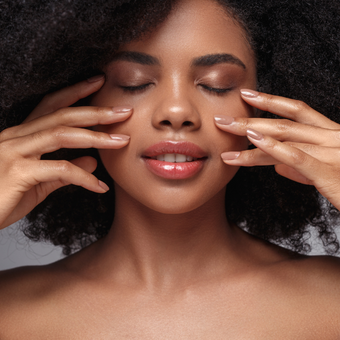The “clean beauty” movement is sweeping the industry, but what does it really mean? We posed this question to our followers on social media and asked whether there’s a difference between green beauty and clean beauty and if it matters to you. Everyone had similar answers and a firm grasp on the definition of both. Everyone agreed that they are not regulated terms, and mostly just marketing fluff. You may be correct!
Simply put, clean beauty means free of things that can harm you, and green beauty means plant based. Green and clean beauty products are subjective and not regulated, and some people argue these are just buzzwords. Unfortunately, “green-washing” has become a common practice in the industry. This is when a product makes claims that they are natural, plant-based, eco-friendly, sustainable, or organic when, in fact, they are not.
But down to the root of these industry trends—where did they originate from and do they really matter?
You are what you eat
Clean beauty comes from the clean-eating movement, which focuses on eating natural, whole, unprocessed foods. Clean products are those without toxic ingredients. However, the FDA has only banned a very small list of ingredients. So, what classifies something as nontoxic? This is open for some interpretation and allows brands to take it upon themselves to determine what ingredients are toxic and to eliminate them from their products. The trending toxic ingredients are parabens, phthalates, and talc, to name a few. Companies like the Environment Working Group aim to educate on all toxic ingredients and is accessible to the public.
Some people view clean beauty with the mindset that if clean eating is good for what I put in my body, then it must be good for what I put ON my body.
Green sprouted from clean
Green products are made sustainably and in a way that does not harm the planet. This usually also involves not just the product itself but also package, ink dyes, and even shipping.
Where green and sustainable clash
Hearts of palm, coconut, acai, and other favored ingredients are prized resources that get stripped from the natural landscape. This depletes the land and contradicts the definition of sustainability.
When it comes to sustainable packaging, this often costs more in resources to produce than to recycle. Some companies and countries have packaging requirements to ensure product integrity, which also affects efforts for sustainability.
Is Natural Better?
Natural simply means an ingredient came from nature, but keep in mind that natural ingredients can still be toxic. It’s important to understand how the hair and scalp responds to ingredients. Signs of a bad reaction include dry, brittle hair, irritated scalp, hair loss, rash, etc. Always perform a thorough consultation to determine whether your client has any known allergies. Further, never DIY your own products with natural ingredients. Natural products still must come from an FDA approved lab.
FAQs
What does it mean for a hair product to be “clean?”
“Clean” is an industry-standard term that means the hair products do not contain chemicals such as sulfates or parabens.
What is the best natural product for hair?
The top 6 natural ingredients for hair care are:
- Avocado oil
- Coconut oil
- Argan oil
- Honey
- Tea tree oil
- Aloe Vera
Is clean beauty good for hair?
Sulfates are considered a toxic ingredient by some and often in found in cleansers like shampoo. They can strip the hair and damage the hair cuticle, cause scalp and skin irritation, and lead to hair loss. Choosing a hair line that does not contain sulfates and other toxic ingredients may be a good choice for you.
